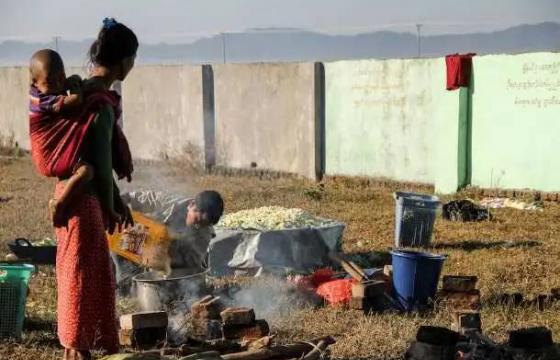The three participants in the 1947 Panglong conference were all among the last to rebel, staying loyal to the government and even fighting other ethnic insurgencies as members of the union armed forces, wrote Matthew Walton, in his paper for Asian Survey, November-December 2008 issue.

Matthew Walton
(Photo: uk.linkedin.com
Although incipient rebellions had broken out earlier, the Shans in 1958 and the Kachins in 1961, both had blown into statewide movements only after the 1962 military takeover.“The Shan and Kachin rebellions did not begin in earnest until it became clear that the military government under Ne Win had no intention of honoring the promises made at Panglong,” Walton, also known as U Tha Noe to his Burmese friends, commented in his 23 page essay The Myths of Panglong: Ethnicity and the Prospects for National Unity in Burma.
The other signatory, the Chins, set up the Chin Independence Army (CIA) in 1961. The movement was succeeded in 1985 by the Chin National Front (CNF), according to Bertil Lintner’s “Burma in Revolt” (1994).
“All those groups that were not party to Panglong rose up almost immediately following Independence,” observes Walton.
They included:
- The Arakan People’s Liberation Party (APLP), led by U Sein Da, who started his armed struggle against the British in 1946 and continued to fight for a separate Arakan state after Burma’s independence in 194s
- The Karen National Union (KNU) that went underground in Insein in January 1949
- The United Karenni States Independence Army (UKSIA), formed by Saw Maw Reh in late 1948
- The Mon National Defense Organization (MNDO)set up in March 1948
Most of them, as non-signatories, “did not hesitate to express their skepticism at the shortcomings of the Panglong Conference.” But as time went by and the reality of geopolitics both inside and outside Burma struck home, demands for independence were dropped and “appeals to Panglong began appearing in their work.”
The author’s conclusion therefore is that as “the agreement, and the myths (surrounding it) retain a strong pull on the consciousness of Burmese of every ethnicity,” “(a) ny discussion of national unity must acknowledge the effects that Panglong has had.”
Panglong, signed by leaders of Ministerial Burma, Chin, Kachin and Federated Shan States, on 12 February 1947, contains the yet to be fulfilled promises of total autonomy, democracy and human rights, and financial autonomy.






